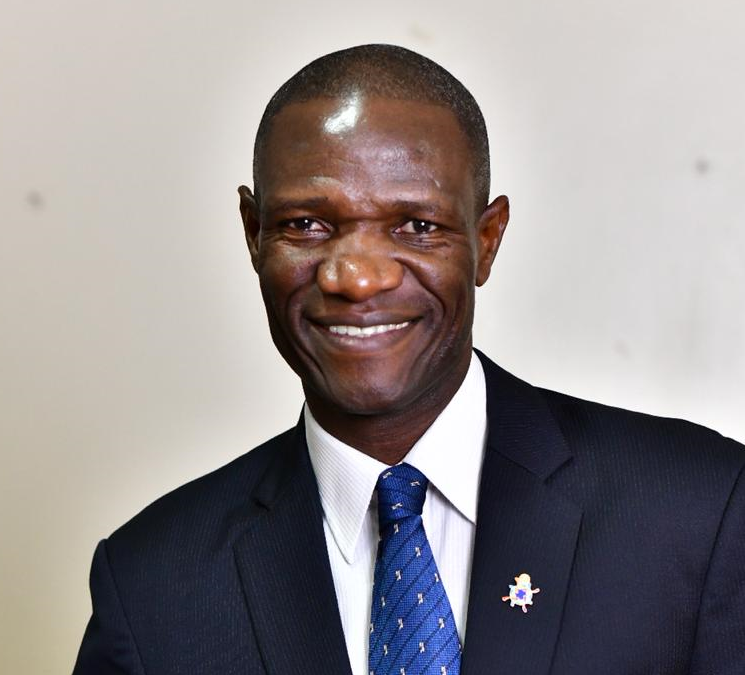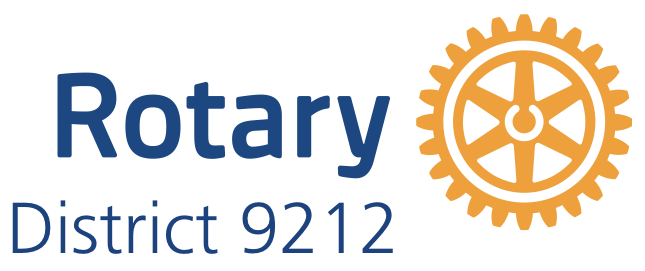BIG 5| Focus on large projects keeps members ENGAGED|

Rotary Club of Nairobi East has a diverse and vibrant membership of different ages and from all races and professions”.
It was chartered on 29th November 1990. The Club meets on Tuesdays between 12.30 and 2pm for lunch and fellowship at the Nairobi Club, located on Ngong Road.
The Club has about 65 members who are involved in various projects in Nairobi, Segera, Kivagala and Kajiado.
The Club has several flagship projects that have successfully been executed funded by Global Grants from Rotary International and in partnerships with local corporates. Their projects are mostly water and sanitation projects.
President Dan Awendo is the current President of the ”coolest club in town, the Rotary Club of Nairobi East.” His classification is real estate. He is currently the Managing Director of Home Afrika Limited, the only real estate development company listed on the Nairobi Securities Exchange (NSE).
We caught up with President Dan Awendo to get insights into what goes into building such a big club yet intimately intertwined club that produces more than a fair share of leaders especially at the District level.
What has your journey been like?
About 18 years ago, I set up The Awendo Foundation with a mission to support education and health needs within my community, giving back to the society that had largely given me for free. Setting up a foundation was a difficult thing to do especially when it came to running its daily operations. One needs governance systems and a management structure to make the organization operationally efficient.
My good old friend, the Late James Gachui, subsequently introduced me to Rotary and the way of Rotary. For a while we kept on talking about it as we met for several occasions. Later he invited me to RCNE for one of the lunch fellowships to get me a better understanding about what Rotary was about. My first encounter with Rotary caught my attention. At this time, Rotary was about 100 years in existence already. It had a tried and tested governance, operational and fellowship structure and plans that it was executing on an annual basis through the more than 30,000 clubs globally. This is what I was lacking within Awendo Foundation. A system that we could ride on to leverage and spread impact possibilities way beyond what I could do on my own.
How long have you been part of Rotary?
It’s now been about 13 years later since I joined Rotary. I ‘wasn’t very active in the first few years. I would go for the usual lunch fellowships meet a few people, listen to a few good speakers and head straight back to the office. During that time, I was investing a lot of time and resources setting up and growing my own business. About 4 years ago, I started becoming more involved as I got more value through the networks and relationships I was able to develop with the club over time. I now realize that you gain a lot more in Rotary when one engages and creates closer ties with other members.
As presidents change over the years and depending on how involved you become at the club and its projects, you quickly get noticed as a target for Presidency. Potential candidates for the Presidency are nominated by mainly past presidents of the club.
What have the 10 years been like, and how has it prepared you as a leader?
One quality that sets the Rotary Club of Nairobi East apart is its ability to develop a leadership pipeline. A pipeline that not only feeds the club with leaders but also feeds other clubs and the District at large. Leadership development comes naturally to club members as members are given projects and functional lead opportunities where they are able to practice and horn their skills over challenging club projects and initiatives. On the other hand, it is also said that if you hang around good leaders, you expose yourself to the same skills and confidence to make you a leader too.
What has contributed to your Club being among the Big 5 clubs in District 9212?
First, the club’s ability to originate and organize big internationally funded projects and successfully execute them gives it an edge over many others who don’t even have internationally funded projects in their portfolio. Rotary is about service and service projects and when you showcase your ability to originate and execute large projects in partnership with other local clubs, local corporates and Rotary International, that sets you apart. This is something others admire, and that is what has contributed to our large numbers.
What are some of the greatest achievements, and how did you achieve such significant growth?
The Club has, to date, spent a lot of time and resources on water and sanitation projects especially in Kajiado where water points are far from each other. Kajiado, as a vast semi-arid area lacks any significant water resources to support the people living there. The club has therefore partnered with Rotary International and Safaricom Foundation to develop various water harvesting and storage systems to enable the residents fetch and store water over longer periods of time.
This Sh.7million project involved setting up water harvesting and storage systems in 11 primary schools in Kajiado, which is now coming to close three years since it was started. The club is interested in growing the projects scope to another 14 schools in the same location. The impact of this especially as regards access to water and thereafter education for children in Kajiado will be tremendous. The club believes that any child who is able to access education will eventually beat the poverty cycle.
The club also gets itself involved in developing other water harvesting and water storage systems such as putting up gutters, construction of boreholes, high level tanks and construction and repair of water piping systems.
The club has also over the last two years planned, arranged and executed a very successful fundraising golf tournament that has so far generated round about Sh.3million after expenses. Some of these funds are now being escrowed into a new education endowment fund that is being set up to fund the school fees requirements of the brilliant boys and girl from St. John School, Korogosho, the school the club has now supported for several years. The school not only benefits from the school fees program the club has introduced to it, but also enjoys mentorship and target setting exercise with club members on a termly basis.
What are the challenges that you have had as a club and as President, and how have you navigated?
While going through the process of developing our strategic plan three (3) year ago, we noted that our biggest challenge was keeping members engaged to the extend they are able to participate in club activities more regularly and with enthusiasm. We note that the percentage of engaged members is usually between 25% and 40%. We must therefore find a way of improving this situation. This is especially because we tend to focus on large projects which require a lot more hands and resources. We seek to improve engagement from the current 40% to possibly 70% by planning activities that help build member relationship and networks and also by encouraging members to participate with their families. These must include social activities that helps build the bonds and friendships amongst members.
How do you keep up with your members and Rotaract Club on a social level?
So far, our relationship with those of our Rotaract clubs has been very distant. We believe that the only way to develop closer links with the Rotaractors is to plan and organize activities together. The plan must involve club members going to give speaker slot talks at the Rotaract club and vice versa. In addition, the Rotary club members must be part of a mentorship program where Rotarians engage Rotaractors in terms of their careers and life generally.
We also want to do a lot more socials jointly with the Rotaractors. While we are disadvantaged because we are a lunch hour fellowship club and therefore only have one hour to do Rotary and fellowship, the club must be proactive to seek socializing opportunities outside of the lunch hour slot to engage together with Rotaractors.
Secondly, one tends to spend time and resources in the area where they get the most return. Through a membership survey the club is now aware of members’ expectations and has developed activities and plans for the year that meet these expectations. This is true for Rotaractors as well.
What are three nuggets of wisdom you could offer as a President of a Big 5 Club?
Firstly, we at club leadership need to spend more quality time with our members. Members ‘won’t come if they don’t feel valued and appreciated. We must therefore pay more attention to members and appreciate them using different ways.
Secondly, people come to Rotary with many expectations. If those expectations are not met, members are likely to be docile, impassionate and at worst never show again. It is essential to identify those expectations and seek to have them met.
Thirdly, clubs within the district tend to work in silos. Every club is different and tends to operate on their own. There is very little synergy between clubs. One of the things I would like to do is create synergistic activities between clubs. For example, planning and running a joint golf tournament incorporating 3 to 5 clubs. Expectation of success for such an activity would be very high and the group is likely to raise a lot more money for projects than any one of them could do if they arranged for the tournament alone. Without inter-club synergy, especially in arranging golf tournaments, long run sustainability will be in question.
As Rotary connects the world, what are you looking forward to implementing?
The main focus of my Rotary Year as President will be to go way way back to what worked for Paul HARRIS 114yrs ago… they were ROTATING in order to CONNECT so as to do BUSINESS and to do GOOD. This can be expounded as follows: –
- Connecting Members to members and the club including our Rotaractors, Interactors and our Rotary Community Corps;
- Connecting Rotary to Corporates… many Corporates are doing good but have no structure and depth. Our club could provide the execution platform for them through partnerships; and
- Connecting Rotary to the Community. There’s more work to be done on the six focus areas of Rotary.
By Karen Rono




